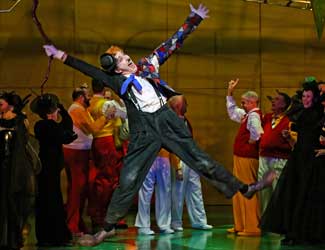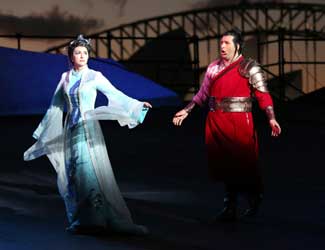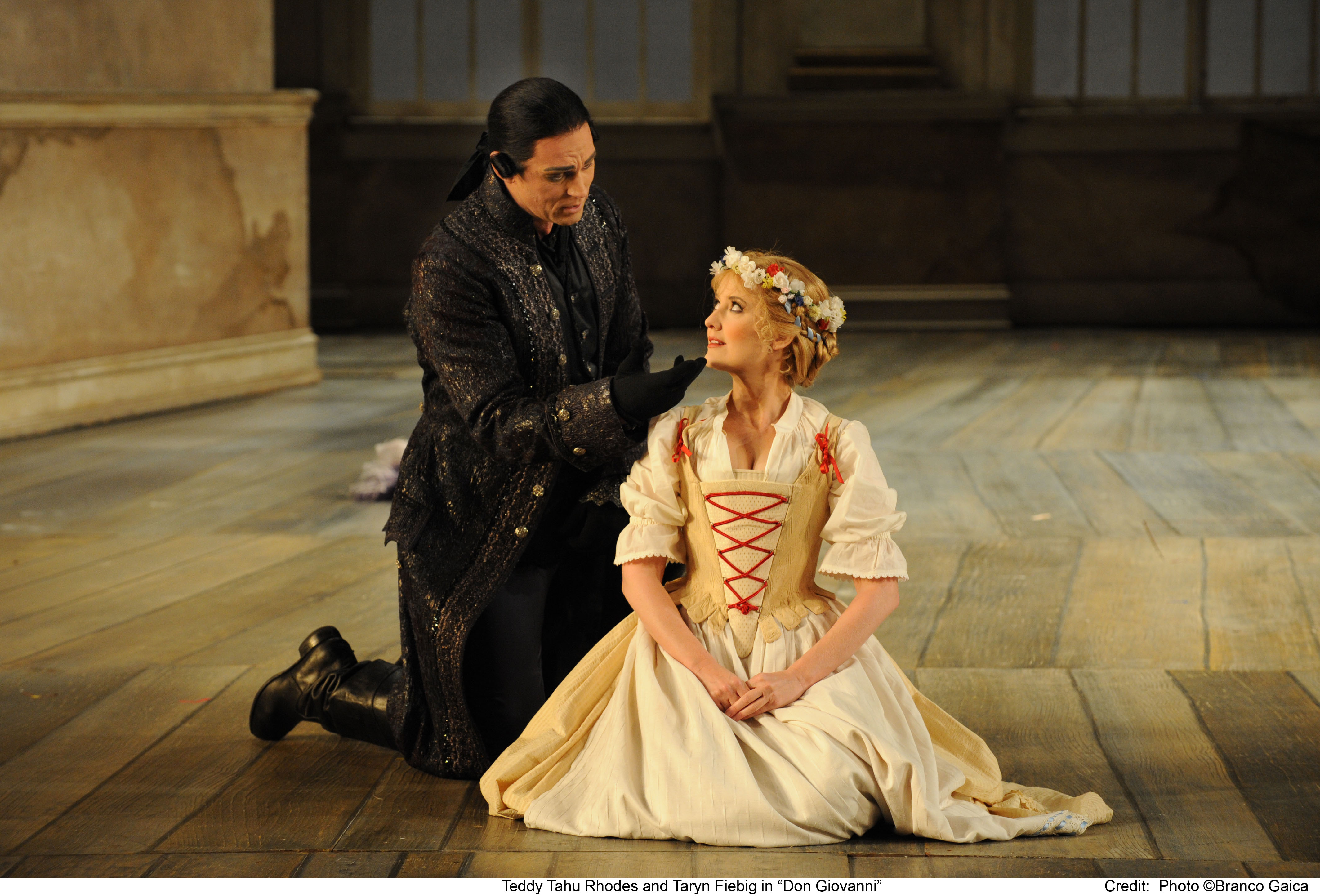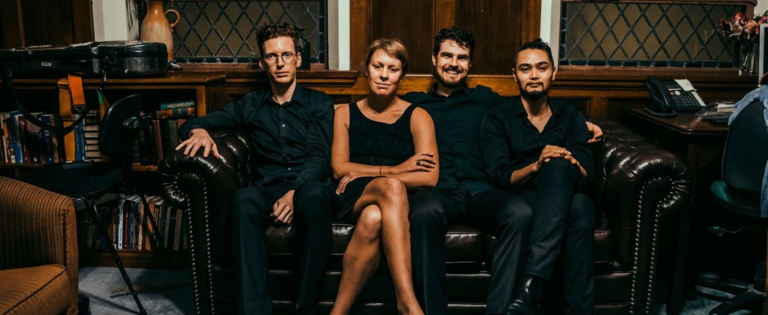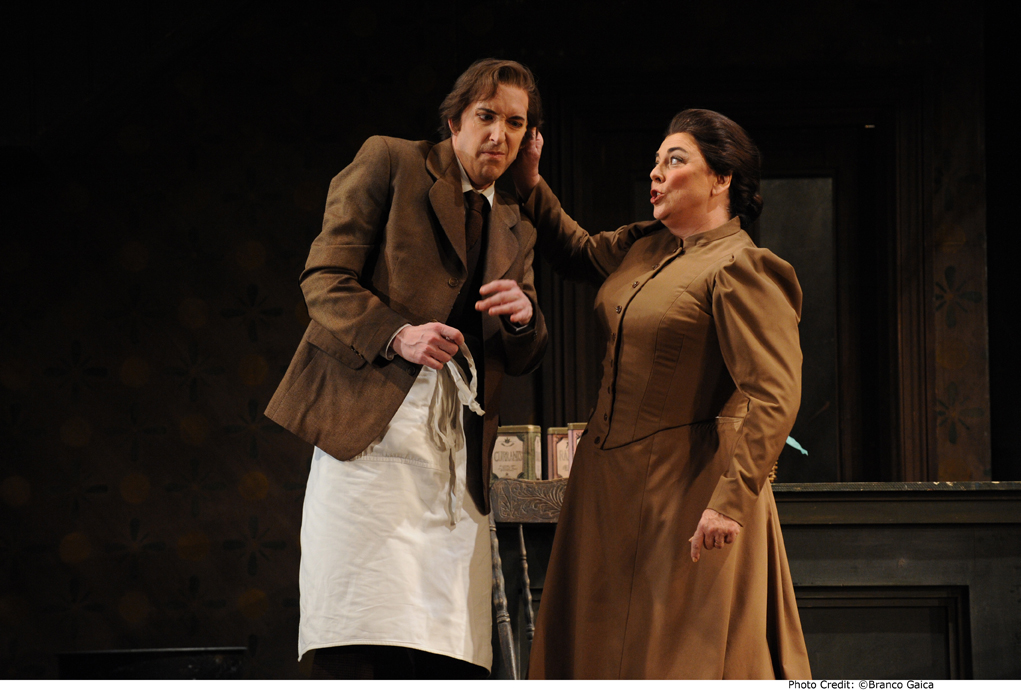Opera Review: The Love For Three Oranges/ Opera Australia
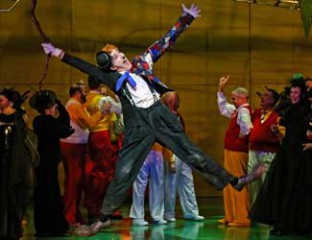
Photo credit: Prudence Upton
“Oh, we’re your real opera buffs! Give us tunes that we can hum!”
So plead the Lyricists in the prologue of Prokofiev’s madcap opera The Love for Three Oranges, whilst the Tragedians demand “blood and thunder…sex and souls” and the Comedians angle for “genuine comedy”. Sadly for the Lyricists, Prokofiev did not write many “tunes that we can hum” in this, his first performed opera. Yet, Opera Australia’s revival of the 2005 production, is the ‘complete package’ and, judging from the guffaws of laughter from the audience, it has popular endorsement as well.
With a reputation as an ‘anti-opera’, the most enduring ditty from The Love for Three Oranges is the toe- tapping March – which is not even a vocal number, but an instrumental one. The clamouring chorus must seem disconcertingly like the disparate audiences that Opera Australia has to cater for and please. With this choice, though Opera Australia is on a winner. The 2005 production left me enchanted. Revisiting it at its 2016 opening this week, affirmed those impressions.
The Love for Three Oranges is set “once upon a time, in the world of make-believe.” With its roots in the traditions of commedia dell’arte, this Francesca Zambello production, revived by Matthew Barclay (Assistant Director in 2005) contains satire, plenty of belly laughs, fantasy and high camp embedded in a riot of colour.
Prokofiev’s score is a masterpiece of musical drollery and characterisation with lots of irreverent noises from the brass section. Tom Stoppard’s wickedly witty English libretto, sits comfortably with the music, well suited to the declamatory style espoused by Prokofiev in this opera. The abundant humour is all the more effective for being able to understand it straight away rather than via a translation. There were English sur-titles on offer, but these were hardly necessary with the sharp diction from the ensemble.
Anthony Legge’s musical direction is impeccable and he brings out the best from the brilliant musicians on stage and in the pit.
The staging was ingenious, cleverly moving from various rooms of the royal palace to the desert buffeted by Farfarello’s stormy red winds, and surreal cactus plants; an eerily glowing cabalistic curtain provided the backdrop for the adroitly staged, pivotal card game. George Tsypin’s abstract sets, Mark Howett’s lighting, Denni Sayers choreography and Tanya Noginova’s innovative costumes drew out the narrative, complementing without distraction.
The perfect casting demonstrated the depth of operatic talent within the company and made it hard to single out any of the principals as they were all outstanding. However, mention must surely be made of Kanen Breen as Truffaldino – half Charlie Chaplin, half harlequin, for whom this role must surely have been created. His fine singing was polished off with a great ease of movement, slapstick, humour and pathos; Adrian Tamburini as the grotesque Cook and David Parkin as the King of Clubs were also exceptional; Antoinette Halloran as Fata Morgana and Rosario La Spina as The Prince made welcome returns to the Sydney stage; the Ridiculous Ones aided and abetted by assorted Doctors, Tragedians, Comics and silent monsters, drunks and soldiers, kept the narrative pumping along with their interpolations in the style of a Greek chorus, each faction promoting its point of view. Placing the chorus around the opera theatre as audience effectively capitalised on their role as observers and commentators – a refreshing use of spaces off the stage. Ironically it is one of the spectator groups – the Ridiculous Ones – that effects the outcome, entering the drama with life saving water for the Princess Ninetta, delicately sung by Opera Australia Young Artist Julie Lea Goodwin.
Written whilst Prokofiev was in New York, during his self-imposed post revolutionary exile, the opera had its premiere in French, in Chicago in 1921. It was translated into Russian for its first Russian outing in (Prokofiev’s absence) in Leningrad 1926 and in Moscow in 1927. Buoyed by its success Prokofiev was able to return to Russian in the 1930s.
Beyond its value as excellent entertainment Prokofiev’s opera is an allegorical exploration of how art should serve society. His cleverness also lies in his vivid painting of the characters, integrating the fragments of music built on innovative harmonies, with the different levels at which the story is told.
A sparking production, brilliantly performed. Coming in at around two hours, this is a must see – and a terrific choice for young ones to experience.
Shamistha de Soysa for SoundsLikeSydney©
The Love for Three Oranges continues in the Joan Sutherland Theatre of the Sydney Opera House on selected dates till July 9 2016.

